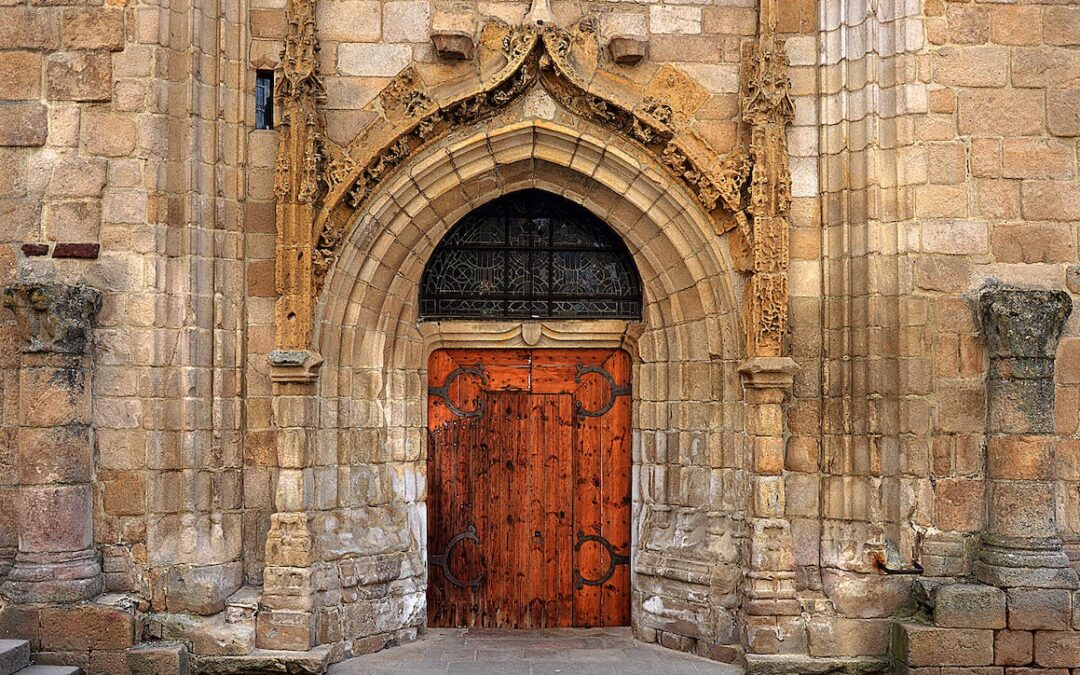
by Contributor | Feb 13, 2023 | Uncategorized
Over the last 10 years, the way people search or find a church to attend has changed significantly. With the proliferation of the internet and the rise of social media, people have more options than ever when it comes to finding a church that aligns with their beliefs and values. Here are five ways that people have changed the way they search or find a church to attend over the last 10 years.
Online directories: In the past, people often had to rely on word of mouth or physical directories to find a church in their area. Today, there are numerous online directories that make it easy for people to search for churches in their area. Some popular options include Church Finder (www.churchfinder.com) and Find a Church (www.findachurch.com) and of course us at Stream Church (www.streamchurch.net).
Social media: Social media has also changed the way people search for a church. Many churches now have their own social media accounts, where they share information about their services, events, and other activities. This can be a great way for people to get a sense of what a church is like before they visit in person.
Online reviews: In the past, people had to rely on the opinions of friends and family when deciding which church to attend. Today, people can turn to online reviews to get a sense of what other people think of a particular church. Websites like Yelp (www.yelp.com) and Google Maps (www.google.com/maps) allow people to read reviews and ratings from others who have attended a particular church.
Websites: Many churches now have their own websites, which can be a great resource for people who are searching for a church. Websites often include information about the church’s beliefs, values, and activities, as well as details about service times and location.
Streaming services: With the advent of technology, many churches now offer streaming services, which allow people to participate in worship and fellowship from the comfort of their own home. Platforms like Stream Church (www.streamchurch.net) provide churches with the tools and resources they need to stream their services online.
In conclusion, the way people search or find a church to attend has changed significantly over the last 10 years. With the proliferation of the internet and the rise of social media, people now have more options than ever when it comes to finding a church that aligns with their beliefs and values. Whether through online directories, social media, online reviews, websites, or streaming services, there are numerous ways for people to connect with a church and get involved in their community.

by Contributor | Feb 12, 2023 | Uncategorized
Are you looking for a way to find and connect with a church online? If so, Stream Church is the ultimate resource for you. With its advanced search filters, comprehensive database, convenient location search, and streaming services, Stream Church makes it easy for you to find and connect with a church that aligns with your beliefs and values. Here is a guide to using Stream Church to find and connect with a church online:
Search for churches: To start your search for a church on Stream Church, visit the website and use the advanced search filters to specify your preferences. You can search for churches based on their location, denomination, senior pastor, and other factors. This will help you find churches that match your criteria and align with your beliefs and values.
Explore churches: Once you have found a list of churches that match your search criteria, you can explore them further by visiting their profiles on Stream Church. Here, you can learn more about the church’s beliefs, teachings, and leadership. You can also watch videos of their services and get a feel for the church’s atmosphere and culture.
Connect with church leaders: Stream Church also provides a way for you to connect with church leaders and ask them questions about their beliefs and teachings. This can be a helpful way to get to know a church and its leadership before deciding to attend in person.
Watch services online: Many churches are now streaming their services online due to the COVID-19 pandemic. Stream Church provides a way for you to watch church services online, which can be a convenient and accessible way for you to participate in the service and feel connected to your church community even if you are unable to attend in person.
Attend in person: Once you have found a church that you feel connected to, you can start attending in-person services

by Contributor | Feb 11, 2023 | Uncategorized
Are you looking for a way to find the right church for you? Whether you are new to an area, looking to switch churches, or simply want to explore your options, finding a church that aligns with your beliefs and values can be an important part of your spiritual journey. One resource that can help you find the right church for you is www.streamchurch.net. Here are 5 ways that Stream Church can help you find the right church for you:
Advanced search filters: Stream Church offers a range of advanced search filters that allow you to specify your preferences and find churches that match your criteria. This can be especially helpful if you are looking for a church with specific denominational beliefs or social viewpoints.
Comprehensive database: Stream Church has a database of over 10,000 churches in various languages, denominations, and locations. This means that you have a wide range of churches to choose from and can find a church that is right for you no matter where you live.
Convenient location search: Stream Church makes it easy to find churches near you by allowing you to search for churches based on your location. This can be especially helpful if you are new to an area or have difficulty using the internet to search for churches.
Streaming services: Many churches are now streaming their services online due to the COVID-19 pandemic. Stream Church provides a way for you to watch church services online, which can be a convenient and accessible way for you to participate in the service and feel connected to your church community even if you are unable to attend in person.
Connect with church leaders: Stream Church also provides a way for you to connect with church leaders and learn more about their beliefs and teachings. This can be a helpful way to get to know a church and its leadership before deciding to attend in person.
As prominent church leader Rick Warren said, “The purpose of the church is to bring people to Jesus Christ, to build them up in the faith, and to send them out to serve God.” Stream Church can help you find a church that aligns with your beliefs and values and helps you grow in your faith. Whether you are a catholic, protestant, or orthodox believer, Stream Church is the ultimate resource for finding and connecting with a church that meets your needs and helps you grow in your faith. So, if you are looking for a way to find the right church for you, be sure to check out www.streamchurch.net for more information.

by Contributor | Feb 10, 2023 | Uncategorized
Church denominations are a type of organization within Christianity that consists of a group of churches that are in agreement on fundamental beliefs and practices. Over the last 50 years, there have been significant changes and developments within the landscape of church denominations. In this article, we will explore how church denominations have evolved over the last 50 years and what factors have contributed to these changes.
One of the main developments within church denominations over the last 50 years has been the growth of non-denominational churches. Non-denominational churches are independent churches that are not affiliated with any particular denomination. In the United States, the number of non-denominational churches has increased significantly in recent decades, with an estimated 25% of American churches now being non-denominational (Source: “The State of the Church 2019” by LifeWay Research).
There are a variety of factors that may contribute to the growth of non-denominational churches. One factor is the increasing diversity of the American population. With the rise of immigration and the increasing cultural diversity of the United States, many people may be drawn to non-denominational churches that are not tied to a specific cultural or ethnic group. Additionally, non-denominational churches may appeal to people who are seeking a more flexible and individualistic approach to spirituality.
Another development within church denominations over the last 50 years has been the growth of megachurches. A megachurch is a church that has a weekly attendance of 2,000 or more people. In the United States, the number of megachurches has increased significantly in recent decades, with an estimated 1,600 megachurches in operation in 2019 (Source: “The State of the Church 2019” by LifeWay Research).
There are a variety of factors that may contribute to the growth of megachurches. One factor is the increasing urbanization of the American population. With more people living in cities and urban areas, megachurches may be more convenient for people who have limited time and transportation options. Additionally, megachurches may offer a wider range of programming and services, such as small groups or counseling, which can be appealing to people looking for a more comprehensive spiritual experience.
Despite the growth of non-denominational churches and megachurches, traditional denominational churches have also continued to play an important role in the American religious landscape. In 2019, 63% of American churches were affiliated with a denomination (Source: “The State of the Church 2019” by LifeWay Research). Many people may be drawn to denominational churches due to their shared history, doctrine, and sense of community.
In conclusion, church denominations have evolved significantly over the last 50 years. The growth of non-denominational churches and megachurches reflects the increasing diversity and urbanization of the American population, as well as the changing spiritual needs of people. Traditional denominational churches have also continued to play an important role in the American religious landscape. As the world continues to change, it is likely that church denominations will continue to evolve and adapt to the needs of their congregations.

by Contributor | Feb 9, 2023 | Uncategorized
Protestants, Catholics, and Orthodox Christians are three major denominations within Christianity. While they share many beliefs and practices in common, there are also significant differences between these denominations. Understanding the relationship between Protestants, Catholics, and Orthodox Christians is important for anyone seeking to understand the complexity and diversity of the Christian faith.
Protestants and Catholics have a long and complex history. Protestantism emerged in the 16th century as a response to what some saw as the corruption and excesses of the Catholic Church. According to Martin Luther, one of the key figures in the Protestant Reformation, “The true treasure of the church is the most holy gospel of the glory and grace of God” (Luther’s Works, vol. 31, p. 26). Protestantism is characterized by a strong emphasis on the authority of the Bible, the priesthood of all believers, and the principle of salvation by faith alone.
Catholics, on the other hand, place a strong emphasis on the authority of the Pope and the sacraments, and believe in salvation through faith and good works. In the Catholic Church, sacraments are “efficacious signs of grace, instituted by Christ and entrusted to the Church, by which divine life is dispensed to us” (Catechism of the Catholic Church, p. 311). While there have been conflicts and tensions between Protestants and Catholics throughout history, in recent years there has been a trend towards greater ecumenism and cooperation between these denominations. For example, in the Joint Declaration on the Doctrine of Justification, which was signed in 1999, Catholics and Lutherans (a major Protestant denomination) agreed on the key doctrine of justification by faith.
Orthodox Christianity is another major denomination within Christianity, with a significant presence in Eastern Europe, the Middle East, and parts of Africa. Orthodox Christians place a strong emphasis on tradition and the sacraments, and have a different understanding of the nature of the church than either Protestants or Catholics. In the Orthodox Church, “the bishop is the visible principle and foundation of unity” (Canon 28 of the Council of Chalcedon). While there have been tensions between Orthodox Christians and other denominations in the past, in recent years there has been a trend towards greater cooperation and dialogue between these groups.
Stream Church is a platform that can help build stronger relationships among Protestants, Catholics, and Orthodox Christians. By providing a space for these denominations to stream their services online and connect with each other, Stream Church can help foster a sense of community and understanding among Christians of different denominations. Additionally, with resources like sermon notes and small group materials, Stream Church can help individuals from different denominations learn from and grow with each other.
In conclusion, Protestants, Catholics, and Orthodox Christians are three major denominations within Christianity that have a complex and sometimes contentious relationship. While there have been conflicts and tensions between these denominations in the past, in recent years there has been a trend towards greater ecumenism and cooperation. Stream Church is a platform that can help build stronger relationships among these denominations by providing a space for them to stream their services online and connect with each other.

by Contributor | Feb 9, 2023 | Uncategorized
Church streaming has become an increasingly popular way for churches to reach their congregation and connect with new members. With the rise of technology and the increasing use of the internet, more and more churches are turning to streaming services to expand their reach and engage with their audience. Here are some statistics that highlight the growth and impact of church streaming:
In 2019, 70% of churches in the United States streamed their services online (Source: “State of the Church 2019” by LifeWay Research). This represents a significant increase from previous years, and reflects the growing trend of churches using technology to connect with their congregation.
In a survey of 1,000 churches in the United States, it was found that church streaming had a positive impact on church attendance. 37% of churches reported an increase in attendance due to streaming, while only 9% reported a decrease (Source: “The State of Church Streaming 2019” by ChurchTechToday). This suggests that church streaming can be an effective way to reach new members and engage with people who may not be able to attend in person.
In a survey of 1,000 churches in the United States, it was found that the main reason churches streamed their services was to reach new people (65%) and to accommodate people who were unable to attend in person (56%) (Source: “The State of Church Streaming 2019” by ChurchTechToday). This suggests that church streaming is being used as a way to expand the reach of the church and connect with people who may not be able to attend in person due to distance, mobility issues, or other barriers.
In a survey of 1,000 churches in the United States, it was found that the most popular platforms for church streaming were YouTube (67%), Facebook Live (48%), and a custom church website (42%) (Source: “The State of Church Streaming 2019” by ChurchTechToday). This indicates that churches are using a variety of platforms to stream their services, and that YouTube and Facebook Live are particularly popular choices.
In conclusion, church streaming has become an increasingly popular way for churches to connect with their congregation and reach new members. With the rise of technology and the increasing use of the internet, more and more churches are turning to streaming services to expand their reach and engage with their audience. Based on the statistics above, it seems that church streaming is having a positive impact on church attendance, and is being used as a way to reach new people and accommodate those who are unable to attend in person.






